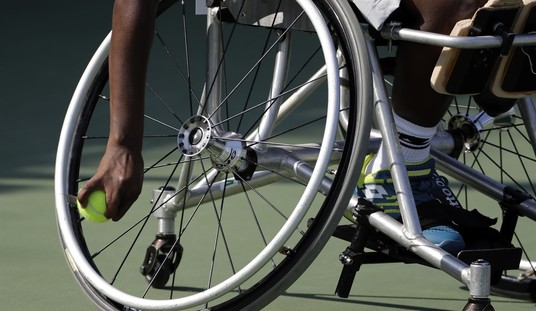The headline reads “How Today’s Toys May Be Harming Your Daughter.” But, the National Geographic piece has nothing to do with sharp edges on play castles or hidden knives in dolls. Rather, it’s yet another “study” on the evils of gendered toy marketing. A study, mind you, that essentially over-analyzes a catalog of research on how toys have been marketed to boys and girls over the past 75 years, only to conclude that boys like to play with Legos while girls prefer playing with dolls. It’s the stuff of most culture blogs these days, except for the fact that it was penned by a NatGeo writer who was obviously a little too smart for her own good. Read between the lines and you’ll encounter some seriously dangerous facts like:
This is because girls have leeway in American society that boys do not. “We’ve really defined a much narrower role of what counts as masculinity,” Auster says. “ ‘Tomboy’ can mean anything from neutral to great. ‘Sissy’ is not meant in a positive way among kids.”
A 2015 study found that boys are more likely to play with toys that develop spatial intelligence—K’nex, puzzles, Lego bricks—than girls are.
Boys also appear to play differently. According to a 2012 study by Susan Levine, a professor of education and psychology at the University of Chicago, boys opt to play with more complex puzzles…These distinctions may shape later life: “Spatial skills are a piece of the explanation for the underrepresentation of women in science and tech,” says Jirout. Informal activities like play are key to developing spatial skills, which, she says, are “not only important for math and science but for what we call ‘executive function’—higher-level thinking.”
In other words, boys will be boys. And because boys will be boys, the chances are certain professions will continue to appeal strongly to boys, whether parents, toy companies or social justice pundits like it or not.
To give you an example of how desperate the NatGeo author was to reconstruct the facts in order to convey a politically correct opinion, check out the following:
… boys opt to play with more complex puzzles—and get more spatially related encouragement from their parents. Parents are more likely to use words that foster spatial thinking—tall, big, edge, top, and bottom—when their children play with more challenging puzzles.
First, she asserts that boys “get more spatially-related encouragement from their parents” than girls. Then she bases her assertion on the fact that parents of boys dare to verbally interact with their sons while they play with blocks. These conversations include spatial terms directly related to their block play. What kind of biased, anti-female parenting is this! This is…this is… “spatially-related encouragement,” dammit and it must be stopped!
Instead, let’s cease and desist the reckless quest to socially engineer gender roles according to whoever shouts the loudest on the Internet. It is a dangerous and stupid thing to make someone into something they aren’t just to suit a trendy agenda.








Join the conversation as a VIP Member